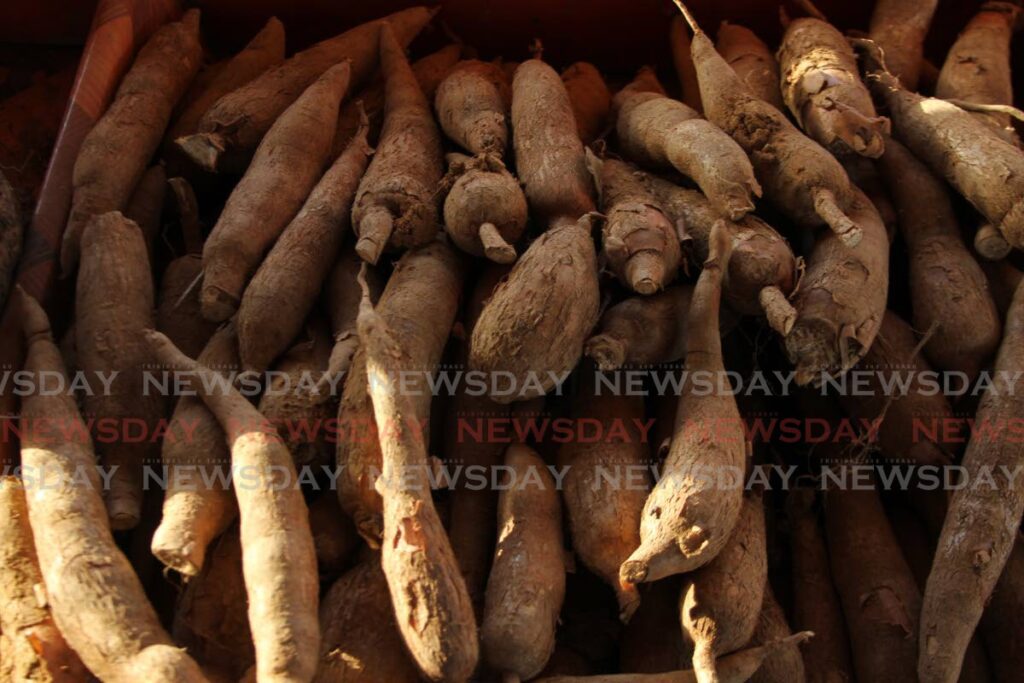With low production and high cost, how feasible is shift to alternative flour?

Trinidad and Tobago's import bill stands at $5 billion as reported by the Ministry of Trade and Industry on March 31, and a similar pattern of high import bills is found throughout the Caribbean islands. With the collective import bill amounting to US$6 billion among the chain of islands, Caricom heads, at a meeting held on May 31, have discussed ways to reduce that by 25 per cent come 2025.
One of the solutions offered is to reboot the agricultural sector, which Caricom secretary general Dr Carla Bennett said can "improve production, productivity and intra-regional trade."
With this in mind and the recent hike in the price of flour in TT, as announced by National Flour Mills (NFM) and Nutrimix on June 21 and 22 respectively, the idea of switching to alternatives to wheat flour, such as cassava and sweet potato flour is being tossed around. But considering that these alternative flours cost at least $40 per pound while two pounds of wheat flour cost $18, the question remains, is it really a feasible alternative?
But chairman of the National Marketing and Development Corporation (Namdevco) Wayne Innis believes the high prices are because of the small amounts in which they are being manufactured. He anticipates that once the demand for these alternatives rise and they are manufactured in larger quantities, customers will see lower costs at the supermarkets. Namdevco has been hosting demonstrations using the alternative flours and giving shoppers of the farmer's market samples and recipes.
Owner of Heaven Bliss Akelia Dalrymple has been trying the recipes and said it's quite costly because she operates a one-woman business.
"I wash, peel, cut, steam, grate, strain, strain and strain some more. In other words, I do everything myself."
Dalrymple started making flour using cassava, sweet potato and pigeon peas as a healthy replacement for shelved baby food. She got so many requests for it that she opened a business and started selling the products. But she said it’s very costly as she needs about six pounds of cassava to make one pound of flour. In addition to that, she had to purchase her own machinery which came at a hefty price.

"I have commercial dehydrators which cost $14,000 and some smaller units which were $7,000. I also have grinders which were $10,000 each and we have chillers that cost $20,000."
Dalrymple said in her opinion, these prices can decrease by 60 per cent if the government could provide some finances and reduce the taxes imposed on the equipment she sources for her business. She said government can consider incorporating these flours in recipes as healthy options for schools and hospitals throughout the nation, as its life span is longer than that of wheat flour.
"The product has no preservatives or anti-caking agencies in the flour so it can stay for a while once placed in a dry place or in the fridge. It will stay for around one or two years once it's out of moisture or direct sunlight. It stays really good compared to the wheat flour as it doesn't have the cake-binding agencies like wheat flour in which you'd see hard rock clumps."
Business Day spoke with some farmers, whose biggest concern was acquiring more land to produce enough to satisfy the demand of consumers and mass manufacturers. One Chaguanas farmer who preferred to remain anonymous said, current production with one acre of land sometimes will give between 11 to 20,000 pounds of cassava per acre, but he said that these numbers may vary.
"I plant around 60 to 65 acres of land, but not all at once so I can have cassava to sell at any time throughout the year. Sometimes it's around $150 to $200 for a 100-pound bag."
He wasn't sure of the exact figures to cater for an alternative flour manufacturer, but knows the resources would have exorbitant prices and some financial help would be needed.
The Prime Minister said at his post-Cabinet conference on July 7 that there are plans to utilise land in Guyana, Belize and Suriname to regionally produce and export these goods to help local farmers with the production quota.
Both Dalrymple and the cassava farmers are calling on government to consider helping farmers and manufacturers to make the transition easier and less expensive.
Dalrymple also suggested that some of the equipment needed can be manufactured in TT to reduce the additional expenditure incurred by the importation of machinery.


Comments
"With low production and high cost, how feasible is shift to alternative flour?"